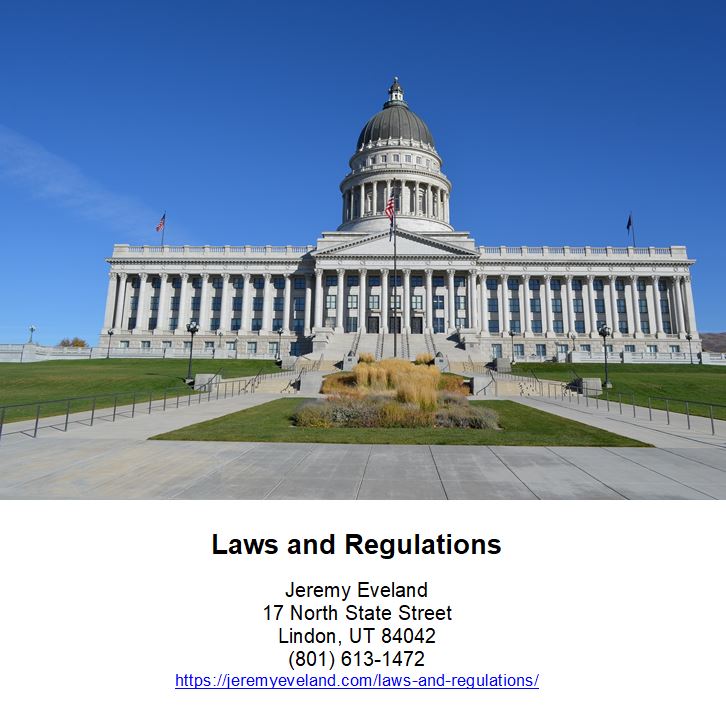Are you considering adopting a child in Utah? It’s important to understand the key differences between independent, agency, and interstate adoptions to make an informed decision. Independent adoptions involve working directly with birth parents and typically require the assistance of an attorney. Agency adoptions, on the other hand, involve a licensed adoption agency in facilitating the process. Lastly, interstate adoptions involve adopting a child from another state and require compliance with state and federal regulations. In this article, we’ll delve into these key differences, address common legal concerns, and provide guidance to help you navigate the adoption process. If you’re ready to take the next step and seek assistance promptly, reach out to the attorney listed on our website for more information.
Independent Adoptions
What Are Independent Adoptions?
Independent adoptions, also known as private adoptions, occur when prospective adoptive parents work directly with the birth parents or a third-party intermediary to facilitate the adoption process. In these adoptions, there is no involvement from an adoption agency or the state government. Instead, the adoptive parents and birth parents negotiate and agree on the terms of the adoption, including the level of contact after the placement of the child.
Benefits of Independent Adoptions
Independent adoptions offer several benefits to both the adoptive parents and the birth parents. For adoptive parents, these adoptions often provide more flexibility and control over the adoption process. They may have more input in selecting the birth parents and have the opportunity to form a personal connection with them. Independent adoptions also tend to have shorter waiting periods compared to agency adoptions.
For birth parents, independent adoptions can provide a greater sense of empowerment and involvement in the decision-making process. They have the ability to choose the adoptive parents and maintain a level of contact with the child after the adoption, if desired. Independent adoptions can also be less expensive than agency adoptions, as there are no agency fees involved.
Challenges of Independent Adoptions
While independent adoptions offer benefits, they also come with their own set of challenges. In these adoptions, the adoptive parents are responsible for finding suitable birth parents and ensuring that all legal requirements are met. This can be a daunting task, as there may be limited resources and support available compared to agency adoptions.
Independent adoptions also carry a higher level of risk compared to agency adoptions. The birth parents may change their mind during the process, leading to emotional and financial implications for the adoptive parents. Additionally, without the oversight and support of an adoption agency, adoptive parents may face difficulties in navigating the legal and logistical aspects of the adoption process.
Requirements for Prospective Adoptive Parents
Prospective adoptive parents engaging in independent adoptions must meet certain requirements to ensure the child’s well-being and legality of the adoption. These requirements vary depending on the laws and regulations of the jurisdiction. Common requirements include the completion of a home study, background checks, financial stability, and the ability to provide a safe and nurturing environment for the child.
Steps Involved in Independent Adoptions
-
Research and Educate: Prospective adoptive parents should thoroughly research the adoption laws and process in their jurisdiction. They should also educate themselves on the different methods of independent adoption and understand the rights and responsibilities of all parties involved.
-
Network and Connect: Building a network and connecting with potential birth parents or adoption professionals is crucial in independent adoptions. Prospective adoptive parents can attend adoption support groups, engage in online forums, and reach out to adoption attorneys or facilitators to find suitable matches.
-
Establish Contact and Establish Trust: Once a match is made with a birth parent, prospective adoptive parents should establish contact and initiate a relationship built on trust and mutual understanding. This involves open and honest communication, addressing expectations, and discussing post-adoption contact, if desired.
-
Legal Assistance and Documentation: It is essential to engage the services of an adoption attorney to ensure all legal requirements are met. The attorney will guide prospective adoptive parents through the necessary paperwork, including consent forms, termination of parental rights, and finalization of the adoption.
-
Post-Adoption Support: After the adoption is finalized, adoptive parents may still require support and guidance. Seeking post-adoption support services, such as counseling and support groups, can help navigate the challenges and ensure a smooth transition for the child.
Costs Associated with Independent Adoptions
The costs associated with independent adoptions can vary depending on various factors such as legal fees, advertising and networking costs, birth parent expenses, and home study fees. Prospective adoptive parents should be prepared to cover these expenses, which can range from several thousand to tens of thousands of dollars. It is essential to consult with an adoption attorney to understand the specific costs involved in the jurisdiction where the adoption will take place.
Agency Adoptions
What Are Agency Adoptions?
Agency adoptions involve the placement of a child through a licensed adoption agency. These agencies are responsible for facilitating the adoption process, including matching prospective adoptive parents with birth parents, ensuring legal compliance, and providing support and services throughout the adoption journey.
Types of Adoption Agencies
There are two main types of adoption agencies: public and private. Public adoption agencies are typically operated by the state or county government and primarily handle foster care adoptions. Private adoption agencies are nonprofit or for-profit organizations that specialize in domestic or international adoptions. Each type of agency has its own set of procedures, requirements, and services.
Benefits of Agency Adoptions
Agency adoptions offer a range of benefits for both the adoptive parents and the birth parents. For adoptive parents, working with an adoption agency provides professional guidance and support throughout the entire process. Agencies have experienced staff who are well-versed in adoption laws and can navigate complex legalities, ensuring a smoother and more predictable adoption journey.
Additionally, agency adoptions often provide a wider pool of potential birth parents to choose from. The agency conducts thorough screenings and evaluations to match prospective adoptive parents with birth parents who align with their preferences and expectations. This increases the chances of a successful and mutually beneficial adoption match.
For birth parents, agency adoptions offer access to comprehensive support services, including counseling, medical care, and financial assistance. Adoption agencies prioritize the well-being of birth parents and ensure they have the information and resources needed to make informed decisions about their child’s future.
Challenges of Agency Adoptions
While agency adoptions have many advantages, there are also potential challenges to consider. One challenge is the longer waiting periods typically associated with agency adoptions. The process of finding a suitable match and completing the necessary evaluations and screenings can take time, leading to a more extended waiting period for prospective adoptive parents.
Another challenge is the cost associated with agency adoptions. Adoption agency fees can be significant, covering services such as birth parent support, matching services, home study evaluations, and post-placement supervision. Prospective adoptive parents should carefully evaluate their financial capabilities and explore funding options, such as grants and loans, to meet the financial demands of agency adoptions.
Requirements for Prospective Adoptive Parents
Prospective adoptive parents must meet specific requirements to be eligible for agency adoptions. These requirements may include age restrictions, marital status, income stability, and completion of a home study evaluation. Agency adoption requirements vary by jurisdiction and type of agency, so it is crucial to research and understand the specific requirements in the chosen adoption agency’s jurisdiction.
Steps Involved in Agency Adoptions
-
Research and Select an Agency: Prospective adoptive parents should research and select an adoption agency based on their preferences, services provided, and reputation. It is essential to choose an agency that aligns with their adoption goals, values, and expectations.
-
Complete the Application and Home Study: After selecting an agency, the prospective adoptive parents will need to complete an application and undergo a home study evaluation. The home study involves interviews, background checks, home visits, and assessments to determine the suitability of the adoptive parents.
-
Attend Adoption Training and Education: Many adoption agencies require prospective adoptive parents to participate in pre-adoption training and education programs. These programs provide valuable information and resources to prepare adoptive parents for the adoption journey and parenting a child with an adoption background.
-
Provide Profile and Match with Birth Parents: Prospective adoptive parents create a profile to introduce themselves to potential birth parents. The agency works to match adoptive parents with birth parents based on preferences, interests, and other criteria. When a match is made, adoptive parents and birth parents have the opportunity to communicate and establish a relationship.
-
Complete Legal Process and Placement: Once a match is confirmed, the adoption agency guides adoptive parents through the legal process, including obtaining consent from the birth parents, termination of parental rights, and finalizing the adoption in court. After the legal process is complete, the child is placed with the adoptive parents.
-
Post-Placement Support and Supervision: Adoption agencies provide post-placement support and supervision to ensure the well-being of the child and the successful adjustment of the adoptive family. This may involve home visits, counseling, and guidance on parenting an adopted child.
Costs Associated with Agency Adoptions
Agency adoptions involve various costs that prospective adoptive parents should be prepared to cover. These costs typically include agency fees, home study fees, legal fees, birth parent expenses (such as medical and counseling), and post-placement supervision fees. The overall cost of agency adoptions can range from several thousand dollars to tens of thousands of dollars. It is important to discuss and understand the specific fees and payment options with the chosen adoption agency.
Interstate Adoptions
What Are Interstate Adoptions?
Interstate adoptions involve the placement of a child for adoption across state lines. This occurs when the prospective adoptive parents and the birth parents reside in different states, or when a child placed for adoption has legal involvement with multiple states. Interstate adoptions require compliance with the Interstate Compact on the Placement of Children (ICPC), a legal agreement that ensures the child’s protection and regulates the placement process.
Interstate Compact on the Placement of Children (ICPC)
The ICPC is a legally binding agreement among all 50 states, the District of Columbia, and the U.S. Virgin Islands. Its purpose is to safeguard the well-being and legal rights of children placed for adoption across state lines. The ICPC establishes guidelines and procedures for the placement of children, ensuring that the adoptive placement is in the child’s best interest and in compliance with the laws of all involved states.
Benefits of Interstate Adoptions
Interstate adoptions offer several benefits, including a broader pool of potential birth parents and a higher likelihood of finding a suitable match. Adoptive parents are not limited by geographical boundaries and can consider birth parents from different states, increasing the chances of a successful adoption match.
Interstate adoptions also provide an opportunity for prospective adoptive parents to grow their family even if there is a shortage of available infants or birth parents in their own state. This can shorten the waiting period and expedite the adoption process.
Challenges of Interstate Adoptions
Interstate adoptions can present challenges due to the complexity of navigating multiple state laws and complying with the ICPC. Each state has its own set of adoption requirements and procedures, which can significantly impact the timeline and process of the adoption. Adoptive parents must work closely with adoption professionals and attorneys to ensure compliance and navigate the legal complexities associated with interstate adoption.
Additionally, the logistics involved in interstate adoptions, such as travel arrangements, coordination with multiple agencies, and communication across state lines, can add another layer of complexity and potential stress to the adoption process.
Requirements for Prospective Adoptive Parents
Prospective adoptive parents engaging in interstate adoptions must meet the adoption requirements of both their home state and the placing state. These requirements typically include age restrictions, marital status, income stability, completion of a home study, and compliance with the ICPC regulations. It is important to consult with adoption professionals and attorneys familiar with interstate adoptions to understand and fulfill the specific requirements.
Steps Involved in Interstate Adoptions
-
Research and Educate: Prospective adoptive parents should research and educate themselves on the complexities and requirements of interstate adoptions. Understanding the ICPC regulations and the adoption laws of the involved states is crucial to navigate the process successfully.
-
Choose Adoption Professional(s): Working with adoption professionals experienced in interstate adoptions is essential. Adoption agencies, attorneys, and facilitators familiar with the ICPC regulations and the legal requirements of multiple states can provide invaluable guidance and support.
-
Complete the Home Study: Prospective adoptive parents must complete a home study evaluation that meets the requirements of both their home state and the placing state. This typically involves interviews, background checks, home visits, and assessments to ensure the suitability of the adoptive parents.
-
Identify Birth Parents and Establish Contact: Adoptive parents can use various methods to identify and connect with birth parents across state lines. This may involve working with adoption agencies, advertising, networking, and engaging the services of adoption facilitators. Establishing contact and building a relationship with the birth parents is crucial in interstate adoptions.
-
Navigate Legal Process and ICPC Compliance: The legal process of interstate adoptions involves complying with the ICPC regulations and the adoption laws of all involved states. Adoptive parents must work closely with adoption attorneys and agencies to ensure all necessary legal documents are in order and the placement complies with the ICPC guidelines.
-
Placement and Post-Placement Support: Once legal requirements are met, and approval from the ICPC is obtained, the child can be placed with the adoptive parents. Post-placement support and supervision may involve collaboration between agencies from the home state and the placing state to ensure the well-being of the child and the success of the adoption.
Costs Associated with Interstate Adoptions
Interstate adoptions can incur additional costs compared to adoptions within a single state. These costs can include travel expenses, attorney fees for multiple jurisdictions, ICPC fees, and compliance with the home study requirements of multiple states. The exact cost of an interstate adoption varies depending on the specific circumstances and the involved states. Prospective adoptive parents should consult with adoption professionals and attorneys to understand and plan for the financial aspects of interstate adoptions.
Legal Concerns in Adopting a Child
Termination of Parental Rights
Before an adoption can take place, the birth parents’ parental rights must be legally terminated. Termination of parental rights can occur voluntarily, through the birth parents’ consent, or involuntarily, through court proceedings. The legal process of terminating parental rights varies by jurisdiction but generally requires a showing that it is in the best interest of the child to be adopted and that the birth parents are unfit or unable to care for the child.
Consent to Adoption
Consent to adoption is a crucial legal requirement in the adoption process. Birth parents must provide informed consent to terminate their parental rights and allow the child to be adopted. The specifics of consent laws vary by jurisdiction, but generally, consent must be given in writing, signed by the birth parents, and witnessed by appropriate parties. In some cases, consent may be revoked within a specified timeframe if the birth parents change their minds.
Home Study Process
The home study process is a comprehensive evaluation of the prospective adoptive parents’ ability to provide a safe and nurturing environment for the child. The process typically involves interviews, home visits, background checks, and assessments conducted by a licensed social worker or adoption agency. The home study helps ensure that the prospective adoptive parents meet the legal and ethical standards required for adoption and helps match them with a suitable child.
Post-Placement Supervision
After the child is placed with the adoptive parents, post-placement supervision is typically required to monitor the child’s well-being and ensure the successful adjustment of the adoptive family. The specifics of post-placement supervision vary by jurisdiction and may involve home visits, counseling, and support services for the adoptive family. The duration and frequency of post-placement supervision depend on the laws and regulations of the jurisdiction.
Birth Father Rights
Birth father rights vary by jurisdiction and depend on the circumstances of the adoption. In some cases, birth fathers may need to provide consent for the adoption to proceed. If the birth father’s identity is unknown or he cannot be located, legal steps must be taken to satisfy the necessary legal requirements for the adoption. It is essential to consult with an adoption attorney to understand the specific laws and procedures regarding birth father rights in the chosen jurisdiction.
Open vs. Closed Adoptions
Open adoptions involve ongoing contact and communication between the adoptive parents, the birth parents, and sometimes even the child. The level of openness and communication is determined and agreed upon by all parties involved, and it can range from casual updates and pictures to regular in-person visits.
Closed adoptions, on the other hand, involve limited or no contact between the adoptive parents and the birth parents after the adoption is finalized. In closed adoptions, identifying information about the birth parents may be kept confidential.
The decision between an open and closed adoption is highly personal and should be made based on the needs and preferences of all parties involved. Prospective adoptive parents should carefully consider the advantages and challenges of both options and communicate openly with the birth parents to find a mutually agreeable level of contact.
Choosing the Right Adoption Option
Considerations for Prospective Adoptive Parents
Choosing the right adoption option is a deeply personal decision that requires careful consideration of various factors. Prospective adoptive parents should take the following factors into account:
Emotional Factors
Emotional readiness is crucial when pursuing adoption. Prospective adoptive parents should assess their ability to emotionally navigate the challenges and joys of the adoption process. They should reflect on their expectations, emotions surrounding infertility or previous parenting experiences, and their capacity to embrace a child with an adoption background.
Financial Factors
Adoption can be a significant financial investment. Prospective adoptive parents should assess their financial resources and determine how much they can comfortably allocate to the adoption process. Researching the costs associated with different adoption options and exploring financial assistance options, such as grants and loans, can help prospective adoptive parents make an informed decision.
Timeframe and Waiting Periods
Adoption can involve extended waiting periods, which can vary depending on the adoption option chosen. Prospective adoptive parents should consider their readiness to navigate the emotions and uncertainties associated with waiting. They should also assess their ability to manage time commitments, such as attending trainings, completing paperwork, and participating in the home study process.
Support and Resources
Adoption can be an emotional and challenging journey. Prospective adoptive parents should evaluate the support systems available to them, including family, friends, support groups, and professional resources. Building a network of support can provide invaluable guidance, understanding, and emotional support throughout the adoption process.
Working With an Adoption Attorney
The Role of an Adoption Attorney
An adoption attorney plays a crucial role in guiding prospective adoptive parents through the legal aspects of the adoption process. Their responsibilities may include:
- Providing legal advice and assistance throughout the adoption journey
- Ensuring compliance with adoption laws and regulations
- Drafting and reviewing legal documents, such as consent forms and adoption agreements
- Representing the adoptive parents in court during adoption proceedings
- Facilitating communication and coordination between all parties involved in the adoption
How an Attorney Can Help
Working with an adoption attorney can provide numerous benefits, including:
-
Expertise: Adoption laws and regulations can be complex and vary by jurisdiction. An adoption attorney specializes in adoption law and can navigate the legal complexities on behalf of the adoptive parents.
-
Protection of Interests: An adoption attorney represents the best interests of the prospective adoptive parents, advocating for their rights and ensuring the legality and ethicality of the adoption process.
-
Guidance and Support: Adoption attorneys provide guidance and support to prospective adoptive parents throughout the entire process. They can answer questions, address concerns, and provide reassurance during what can be an emotional and challenging journey.
Questions to Ask an Adoption Attorney
When selecting an adoption attorney, prospective adoptive parents should ask the following questions to ensure a good fit:
- What is your experience in adoption law?
- Have you handled cases similar to mine before?
- What services do you offer, and what fees are involved?
- How will you communicate with me throughout the process?
- Can you provide references from previous clients?
- What is your approach to resolving potential challenges or conflicts during the adoption process?
Costs and Fees of Adoption Attorney
The costs and fees associated with an adoption attorney vary depending on factors such as the complexity of the adoption, the services provided, and the attorney’s experience and reputation. It is essential to discuss fees and payment arrangements upfront to ensure clarity and avoid any financial surprises. Prospective adoptive parents may also explore legal aid programs, grants, or loans to assist with legal fees if needed.
Frequently Asked Questions
What is the difference between independent and agency adoptions?
The main difference between independent and agency adoptions lies in the involvement of an adoption agency. Independent adoptions occur when the adoptive parents work directly with the birth parents or a third-party intermediary, while agency adoptions involve the placement of a child through a licensed adoption agency. Independent adoptions offer more flexibility and control over the process, while agency adoptions provide professional guidance and broader access to potential birth parents.
Is it possible to adopt a child from another state?
Yes, it is possible to adopt a child from another state through interstate adoptions. However, interstate adoptions involve compliance with the Interstate Compact on the Placement of Children (ICPC), which regulates the placement of children across state lines. Prospective adoptive parents must meet the legal requirements of both their home state and the placing state to proceed with an interstate adoption.
Do I need an attorney for an adoption?
While it is not mandatory to have an attorney for every adoption, working with an adoption attorney is highly recommended. Adoption attorneys specialize in adoption law and can provide expert guidance, ensure legal compliance, and protect the rights and interests of the adoptive parents throughout the process. An attorney can navigate the complexities and potential challenges of the adoption process, providing reassurance and support to prospective adoptive parents.






















